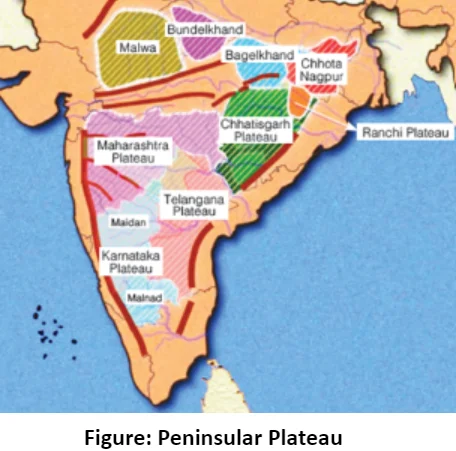![]() May 4, 2024
May 4, 2024
![]() 88
88
![]() 0
0
The Peninsular Plateau, an ancient tableland, is rich in crystalline, igneous, and metamorphic rocks, shaping India’s landscape. Divided into the Deccan Plateau, Central Highlands, and Northeast Plateau, it hosts diverse physiographic features like tors, block mountains, and rift valleys. From the Western Ghats to the Eastern Ghats, this plateau spans regions like Maharashtra, Karnataka, and Kerala, offering a glimpse into India’s geological history.

Divisions of Peninsular Plateau
| Must Read | |
| Current Affairs | Editorial Analysis |
| Upsc Notes | Upsc Blogs |
| NCERT Notes | Free Main Answer Writing |
Conclusion
The Peninsular Plateau, with its remarkable relief features and diverse ecosystems, stands as a testament to India’s geological past and ecological richness. From the towering peaks of the Western Ghats to the rolling hills of the Northeast Plateau, this ancient land continues to shape India’s geography and support its biodiversity. It’s a special place full of amazing natural wonders, offering insights into the forces that have shaped our planet over millions of years.
| Related Articles | |
| The Deccan Plateau | Indian Geography: Location and Overview |
| River Systems of India | Ecological Threat Report 2023 |
<div class="new-fform">
</div>

Latest Comments